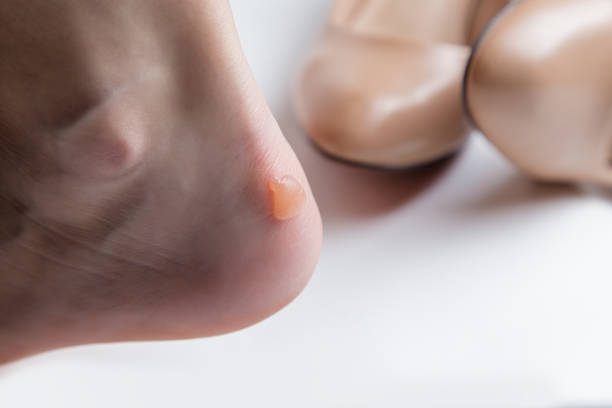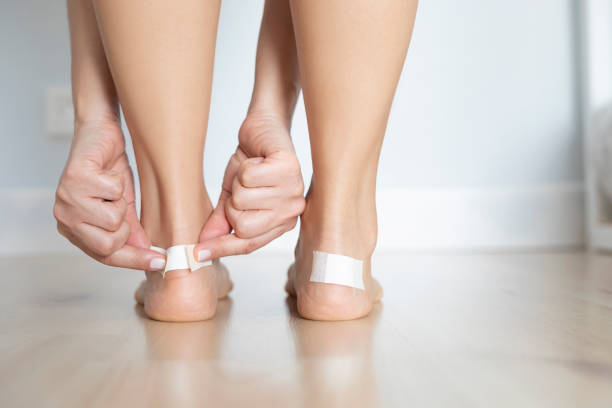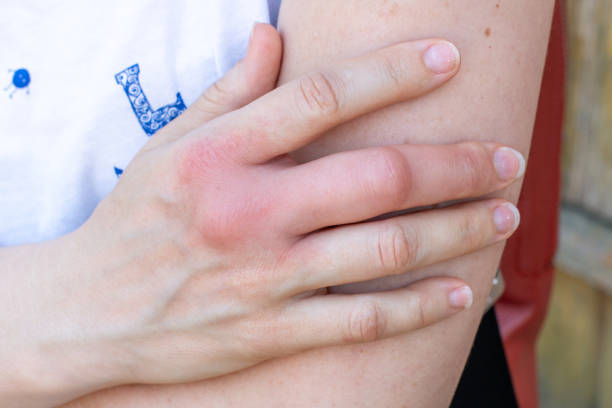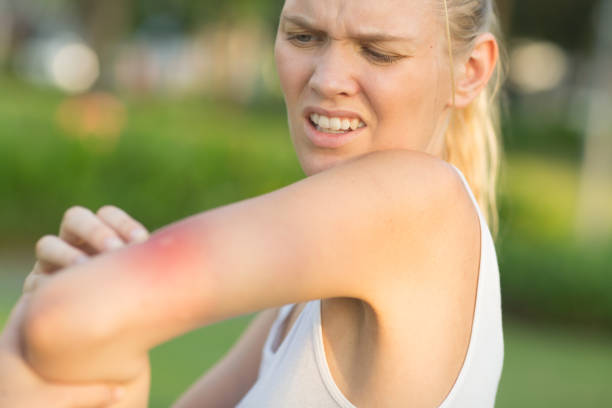Treat blisters on your feet with natural home remedies. Alleviate the symptoms of painful blisters now and avoid blisters on your feet in the future with simple tricks. So you can do something good for your feet.
Blisters can form on your feet after hiking or doing too much sport. Quick-relief is desirable here. Therefore, we will tell you how you can relieve the pain with apple cider vinegar, chamomile tea, and co. and why suitable footwear is so important.
Formation of blisters on the feet
Blisters on the feet are often caused by wearing shoes that are too small or too large. These then exert pressure or friction on certain parts of the foot. As a result, these are then irritated and, in the worst case, the top layer of skin lifts off the underlying layer of skin. In the end, the resulting cavity fills with tissue fluid.

Treat blisters on feet with home remedies
If you have a blister, there are a few home remedies you can use. Because these bring relief to the symptoms and promote the healing process. We have put together the best tips for treating blisters for you:
1) Fight blisters with a chamomile bath
If you got a blister on your feet in your new shoes or after a long hike, you can treat it with a chamomile bath. For this, you have to boil 500 ml of water and then let 3 tea bags of the beneficial chamomile steep in it for about 10 minutes. You should cover the container. Then add the household remedy baking soda (1 tablespoon). The footbath has an antiseptic and soothing effect.
2) Treat blisters on feet with apple cider vinegar
The popular home remedy apple cider vinegar also helps you treat the blisters on your feet effectively. This is because it has an antibacterial effect and reduces inflammation. Therefore, you should dilute a little apple cider vinegar in water. You can then apply this to the blister using a cotton pad. You can repeat this process 2-3 times a day. Also, note our tips for well-groomed feet in summer.
3) Aloe Vera as a home remedy for blisters
Aloe Vera is a true miracle cure. Because of its anti-inflammatory properties, aloe vera is often used. It’s also a great moisturizer. Accordingly, you can either put the direct juice of the plant or a special aloe vera gel on the painful blister. Again, you should apply the gel several times a day. Also, read our article about effective home remedies for tired and rough feet.
4) Tea tree oil promotes healing
You can also use effective tea tree oil to treat blisters on your feet. You proceed in a similar way as with the apple cider vinegar. First, you need to dilute the tea tree oil with water. A ratio of 1 to 3 is recommended. Then put it on a cotton pad and put it on your blister for about 15 minutes.
5) Use blister plasters
If a blister has formed, you should treat the affected area as soon as possible. In addition to the household remedies already mentioned, there are also special blister plasters for this purpose. These are a type of adhesive bandage and promise quick relief from blisters and sores. Common blister plasters are filled with gel or hydrocolloid and cushion the irritated tissue, reducing pain and allowing the blister to heal faster.

The plaster also protects against dirt that could get into the wound and infect it. The blister plaster is warmed up in the hand before application so that it adheres better later. Ideally, several days and thus also during the entire healing process. In addition, see our article on how to avoid foot problems and foot deformities.
Hiking without blisters on your feet
If you like hiking or want to start hiking, you should choose the right hiking shoes. Therefore, give yourself plenty of time when making your selection in the specialty store. Because the shoe has to be adjusted really well and really shouldn’t pinch anywhere. Then wear the new shoes at home and for short distances, because they have to be “worn in” before the big hiking event. Despite the good preparation, you should not forget the blister plasters and always have them in your backpack. For further help, read our tips on trying on and buying shoes.




